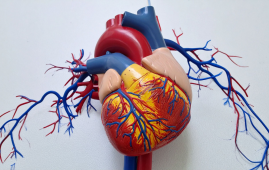

In a groundbreaking development, researchers have integrated a breath sensor for chronic kidney disease (CKD) into the everyday surgical face mask—potentially transforming how we detect and manage this silent but serious condition.
Chronic kidney disease affects an estimated 35 million Americans, with many more likely undiagnosed. Currently, CKD detection relies on blood or urine tests, which may not be accessible for everyone or practical for early-stage screening. This new innovation promises a non-invasive, affordable, and user-friendly alternative.
How the Breath Sensor Works
The innovative sensor was developed by Corrado Di Natale and his team and functions by detecting volatile metabolites in a person’s breath—specifically ammonia, ethanol, propanol, and acetone, which are commonly elevated in CKD patients.
Researchers coated silver electrodes with a conductive polymer modified with porphyrins—molecules highly sensitive to volatile compounds. These electrodes were embedded between the layers of a surgical mask and connected to an electronic readout device. When CKD-associated gases interact with the polymer, they cause a measurable electrical resistance change, indicating the presence of the disease.
Impressive Accuracy in Early Testing
In a clinical trial involving 100 individuals—half with CKD and half without—the breath sensor for chronic kidney disease demonstrated remarkable accuracy. It correctly identified CKD in 84% of diagnosed patients (true positives) and accurately ruled out the disease in 88% of healthy participants (true negatives).
Even more promising, the data showed potential to estimate the stage of CKD, providing critical insights for early intervention and disease management.
A New Era for CKD Monitoring
This wearable diagnostic device could revolutionize CKD monitoring, particularly for underserved populations and early-stage detection. According to study coauthors Sergio Bernardini and Annalisa Noce, this technology could “enhance the management of CKD patients by facilitating timely identification of changes in disease progression.”
As we move into an age where wearable health technology is becoming mainstream, the breath sensor for chronic kidney disease marks a pivotal step forward—offering simplicity, precision, and hope.
For more information: Capuano, R., et al. (2025) Disposable Sensor Array Embedded in Facemasks for the Identification of Chronic Kidney Disease. ACS Sensors. doi.org/10.1021/acssensors.4c03227.
more recommended stories
 Intensive mind-body retreat rapidly alters brain function
Intensive mind-body retreat rapidly alters brain functionAn intensive mind-body retreat combining meditation,.
 Citrus and Grape Compounds Help Prevent Type 2 Diabetes
Citrus and Grape Compounds Help Prevent Type 2 DiabetesA new clinical trial highlights the.
 Personalized Pain Care Transforms Parkinson’s Treatment
Personalized Pain Care Transforms Parkinson’s TreatmentNew UniSA research underscores the urgent.
 Genetic Diversity Explains Obesity Risk Differences
Genetic Diversity Explains Obesity Risk DifferencesCross-ancestry Study Identifies Novel Obesity Genes.
 Meniscal Tear and OA Pain Improved by Home Exercise
Meniscal Tear and OA Pain Improved by Home ExerciseHome Exercise Proves Effective for Knee.
 AI ECG Model Outperforms Standard STEMI Triage
AI ECG Model Outperforms Standard STEMI TriageNovel AI ECG Model Outperforms Standard.
 New Software Transforms Real-Time Pathogen Surveillance
New Software Transforms Real-Time Pathogen SurveillanceReal-Time Pathogen Surveillance Software Transforms Environmental.
 Bright Nights May Increase Stroke, Heart Failures in Adults
Bright Nights May Increase Stroke, Heart Failures in AdultsBright Nights are tied to increased.
 Cannabis Use Linked to Regular Tobacco in US Youth
Cannabis Use Linked to Regular Tobacco in US YouthCannabis Use and Tobacco Risk: A.
 Mediterranean Diet Reduces Endometriosis Risk in Women
Mediterranean Diet Reduces Endometriosis Risk in WomenMediterranean Diet and Endometriosis: A Promising.

Leave a Comment